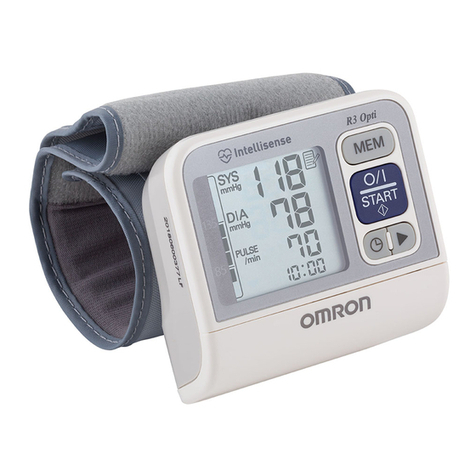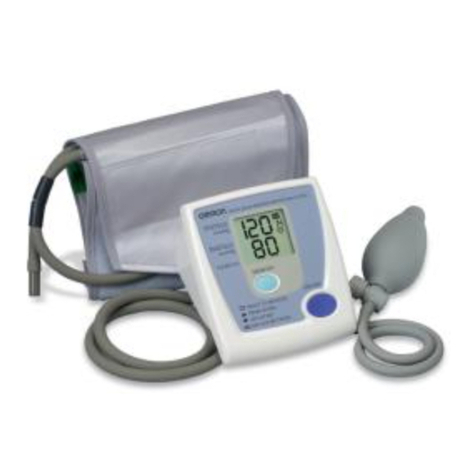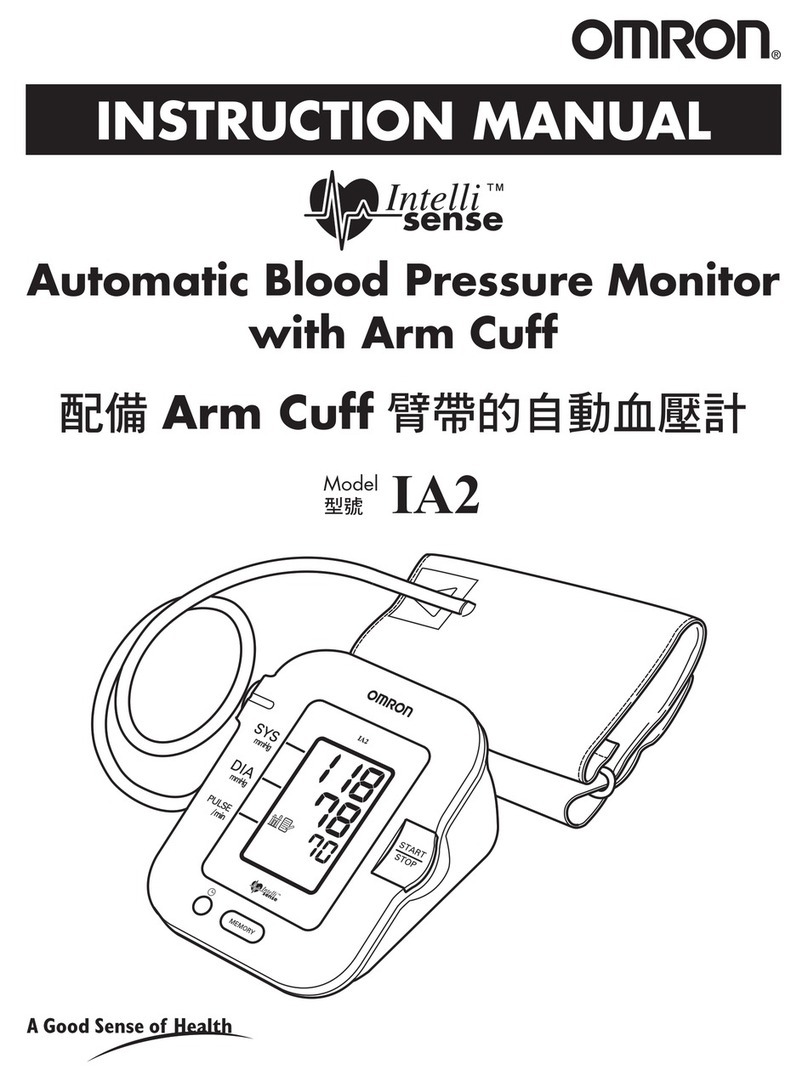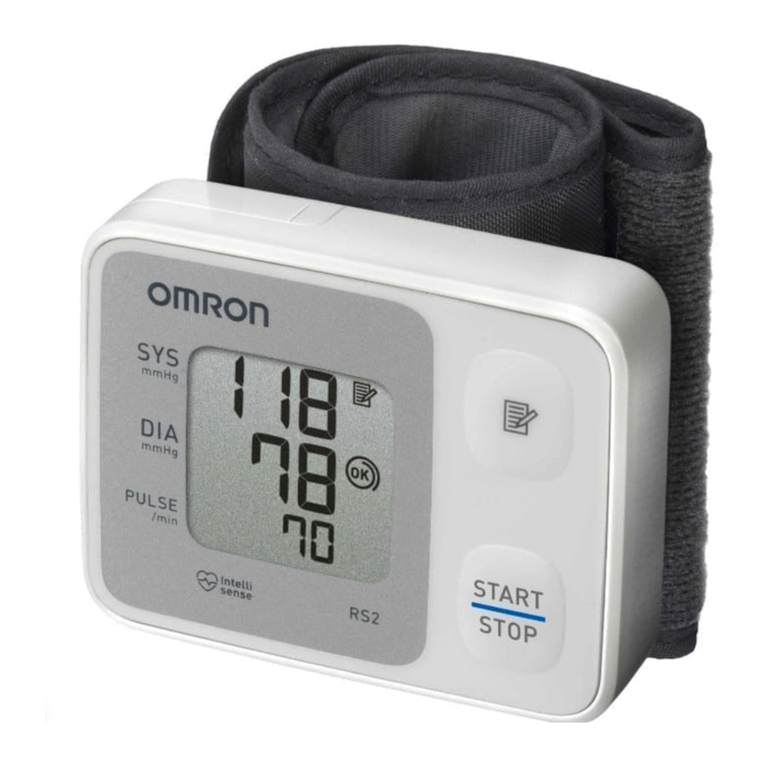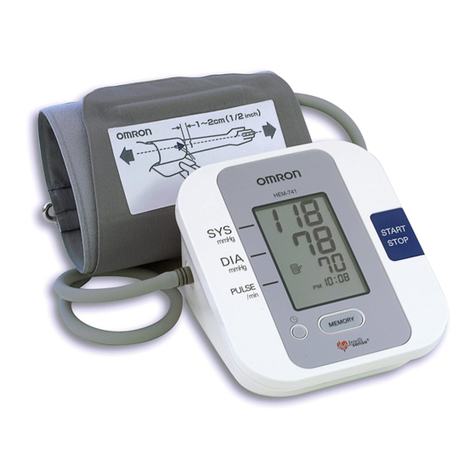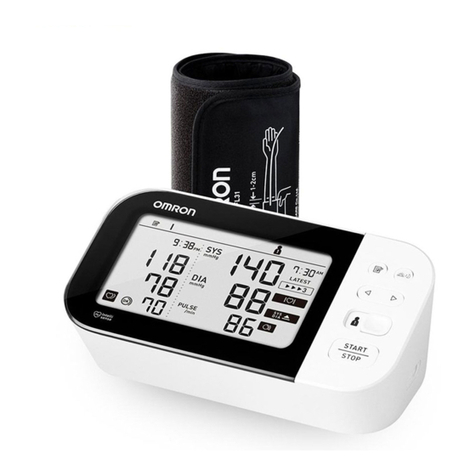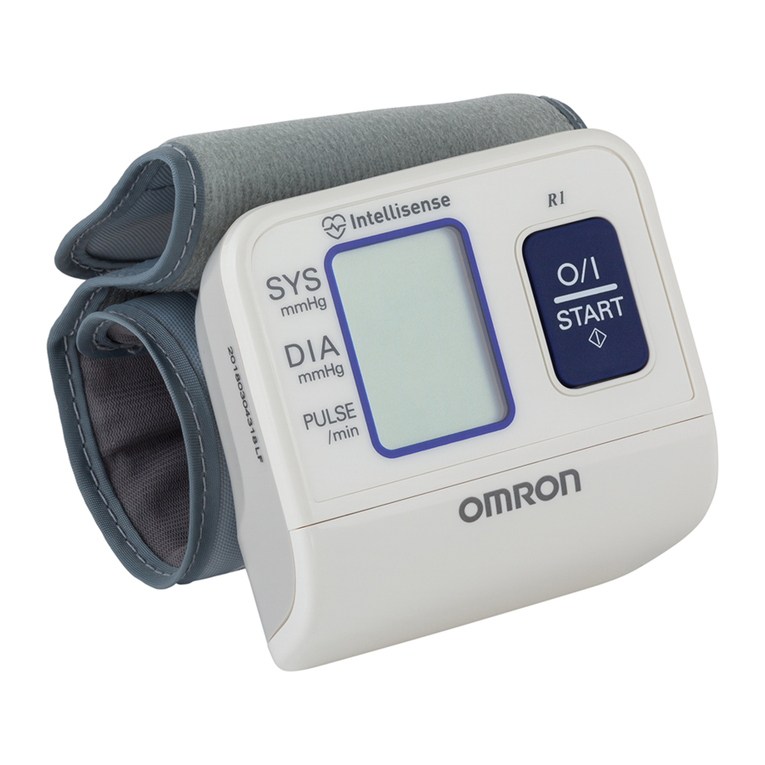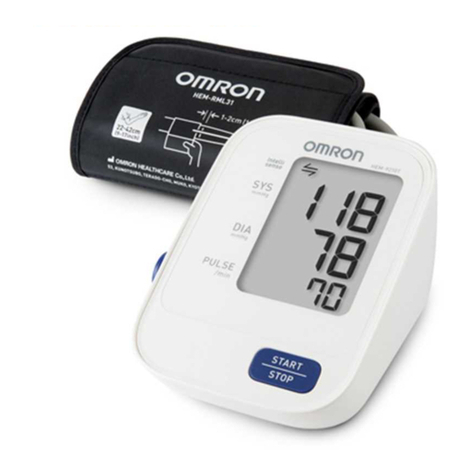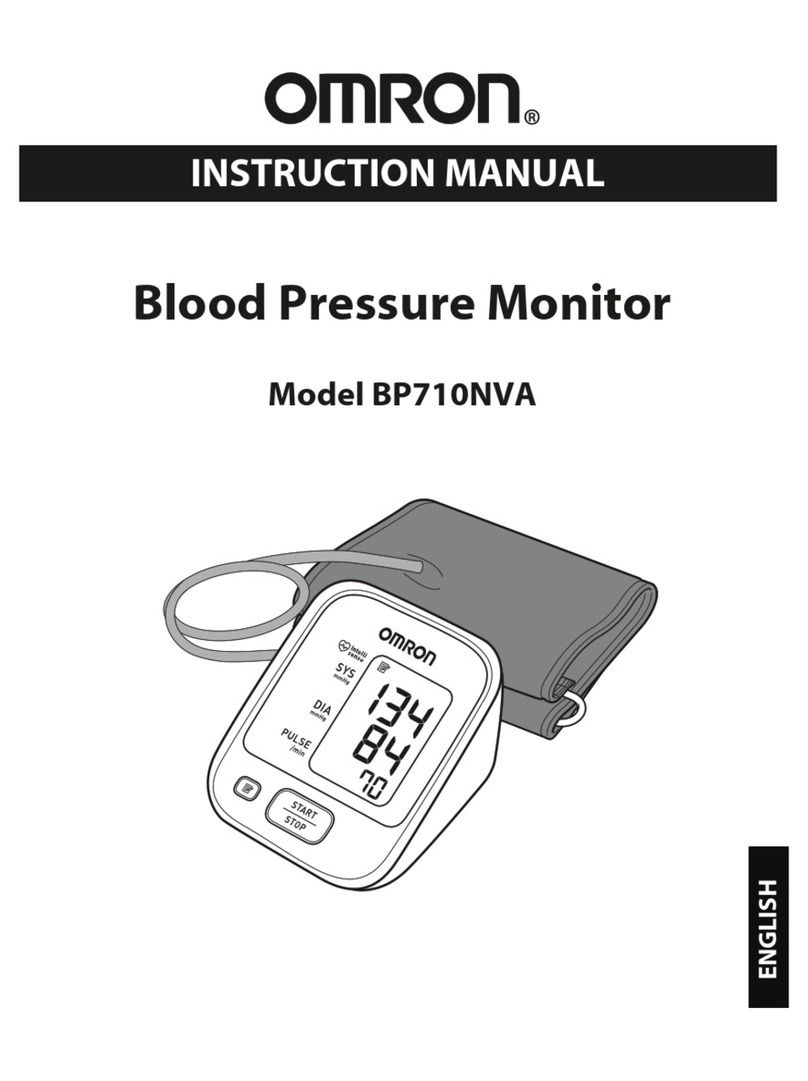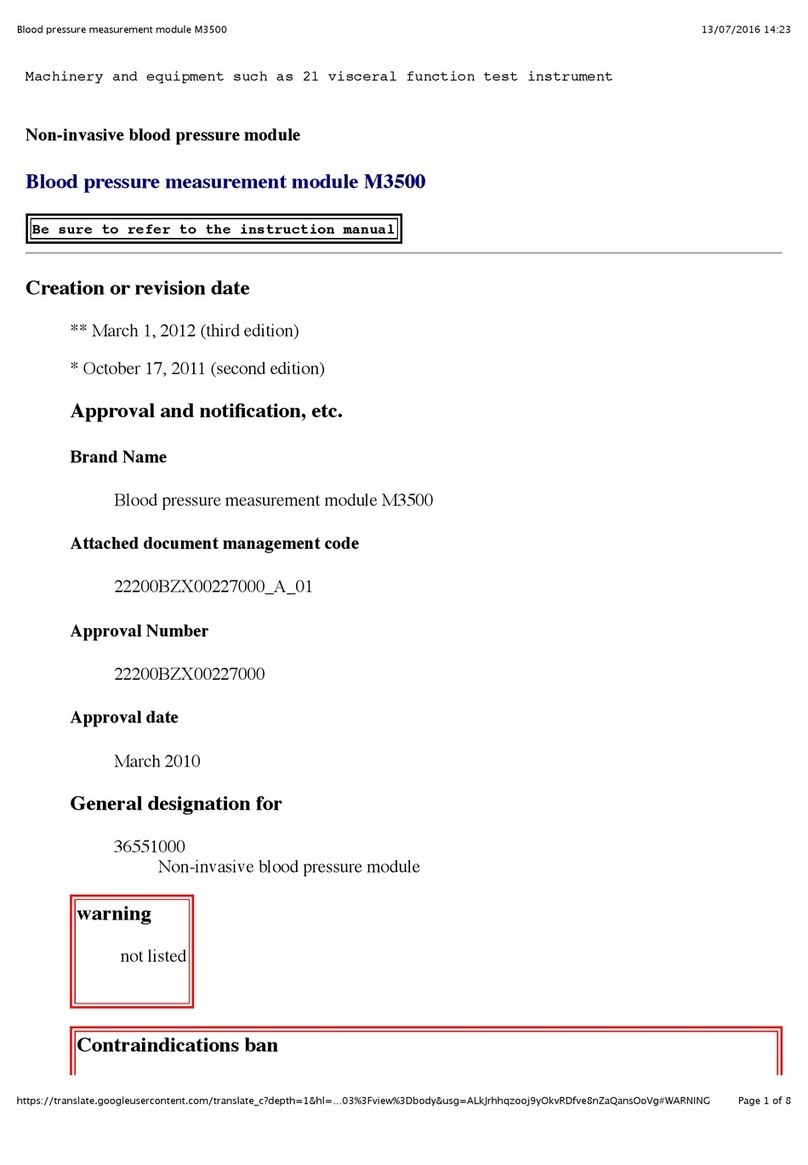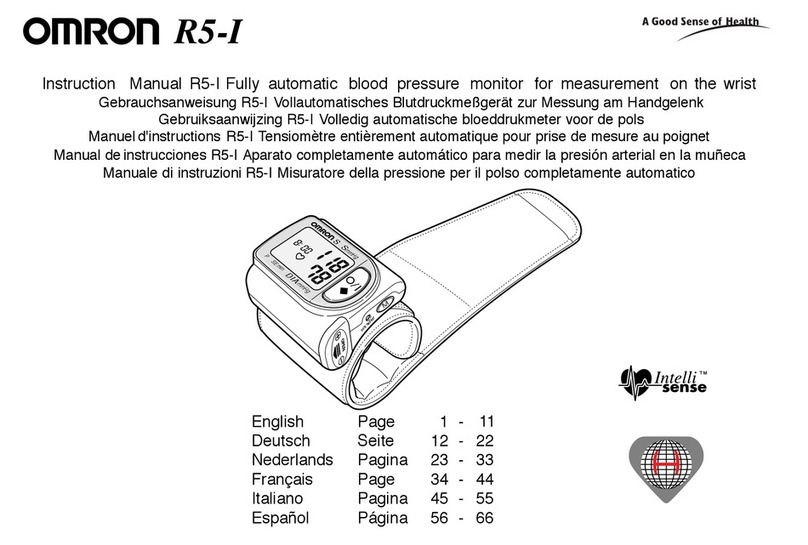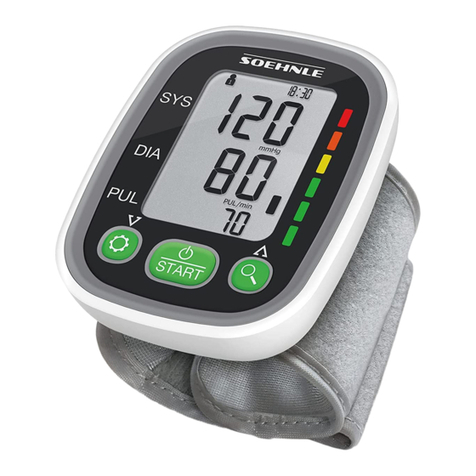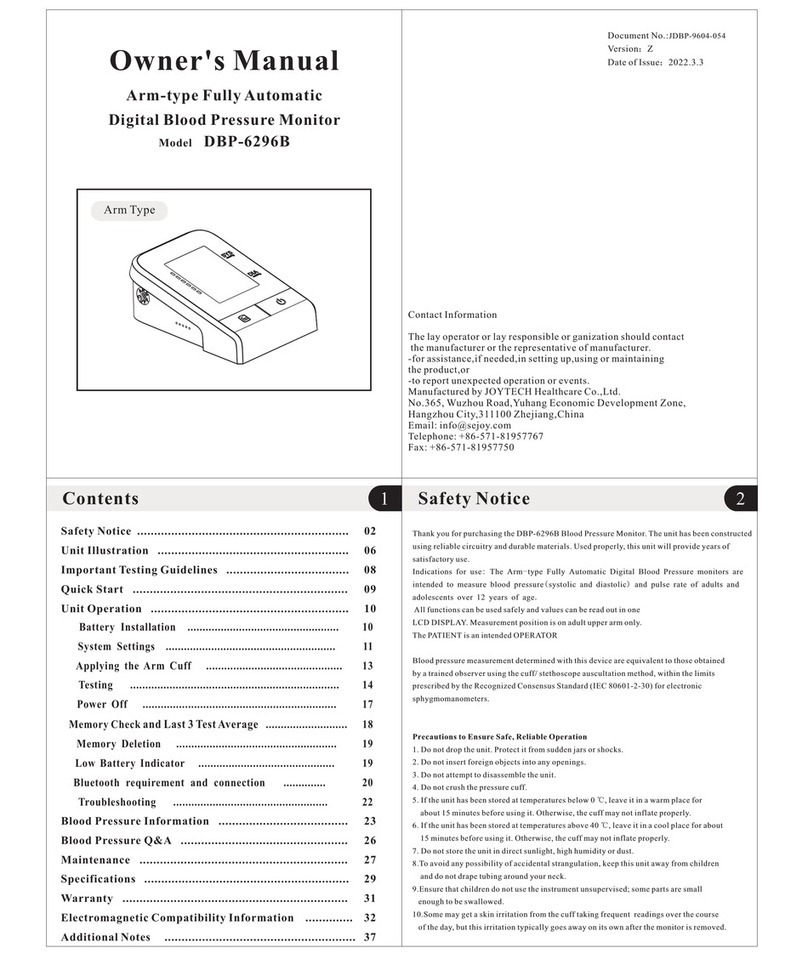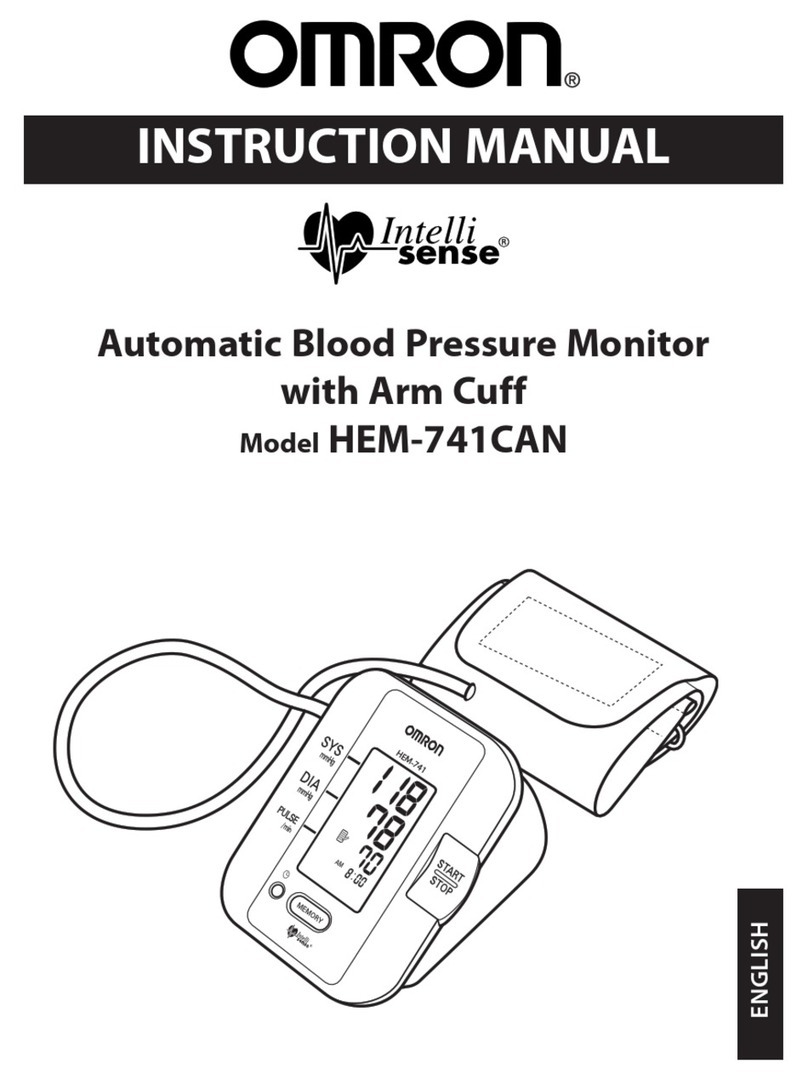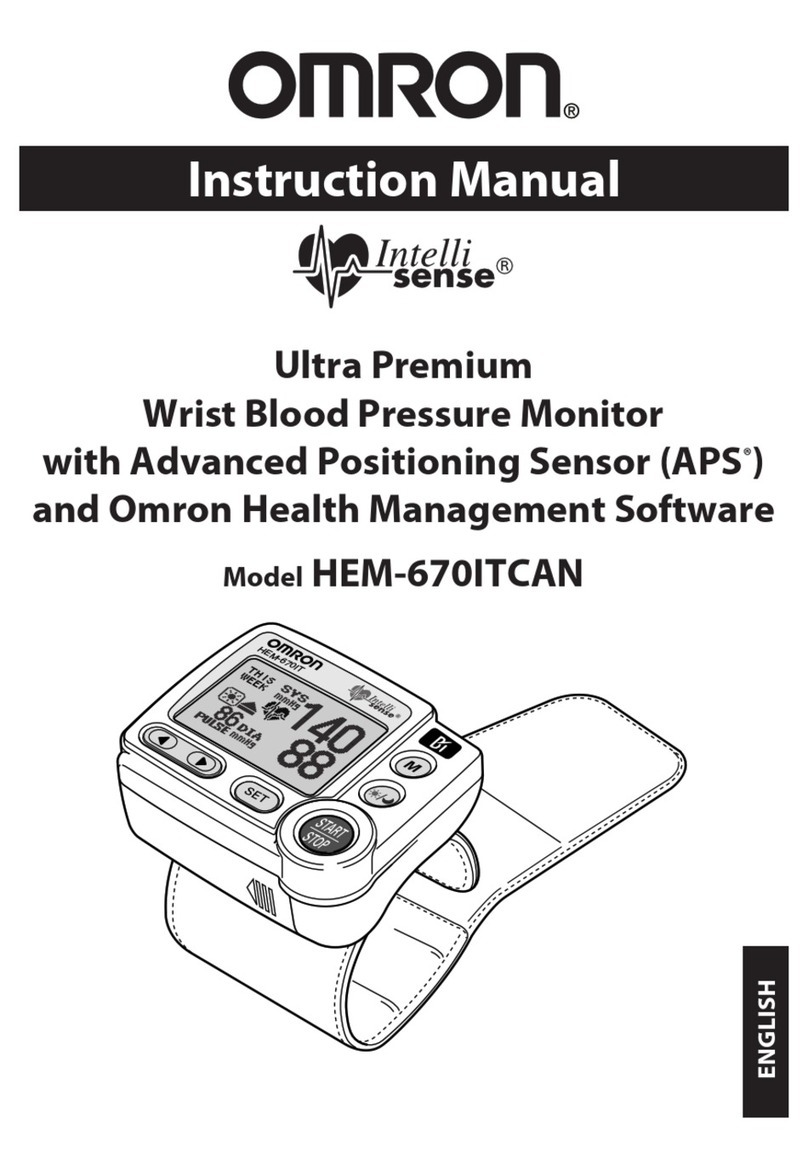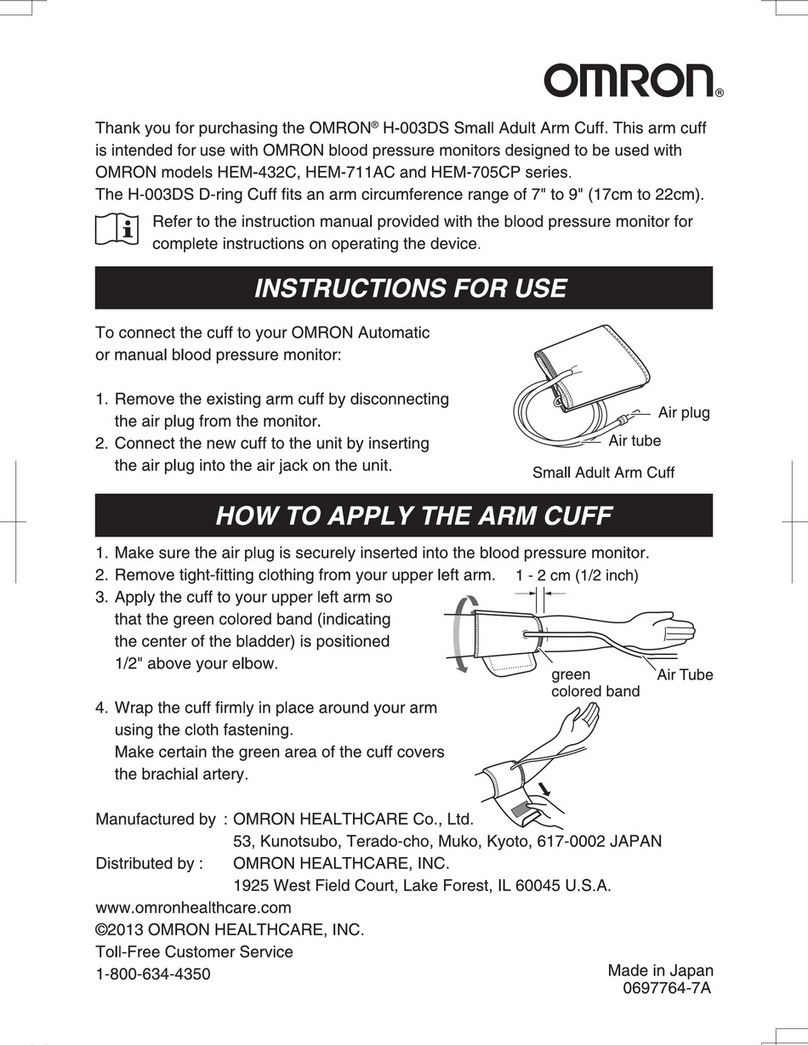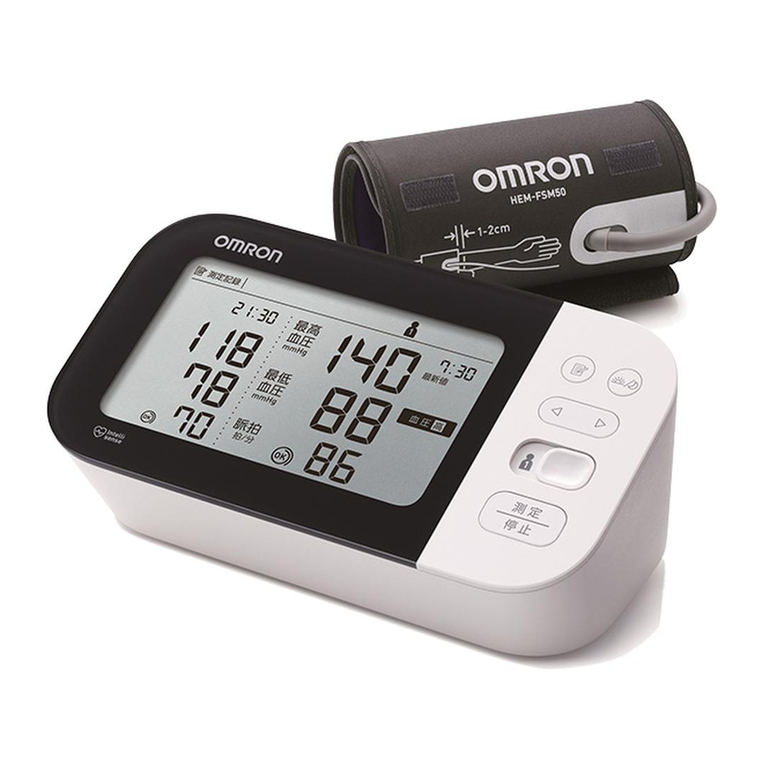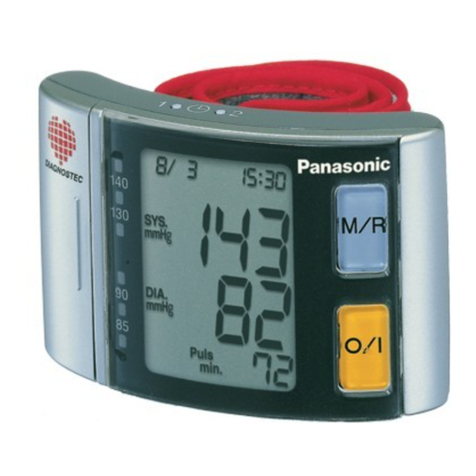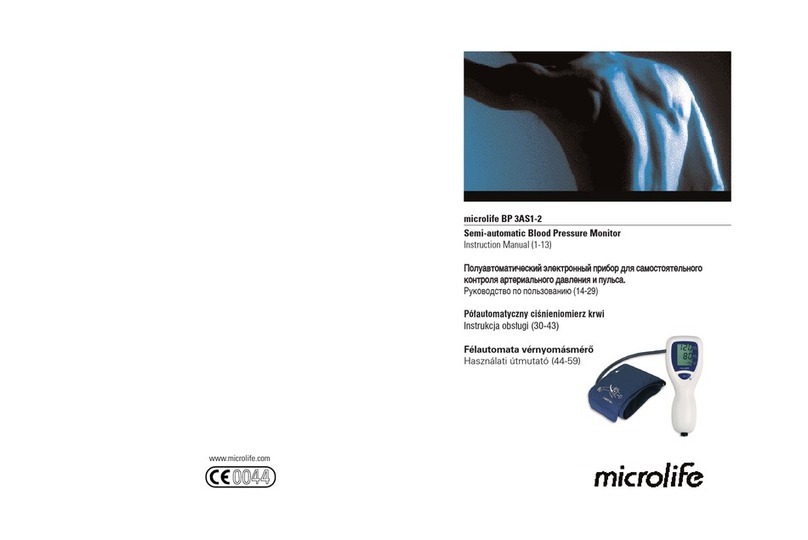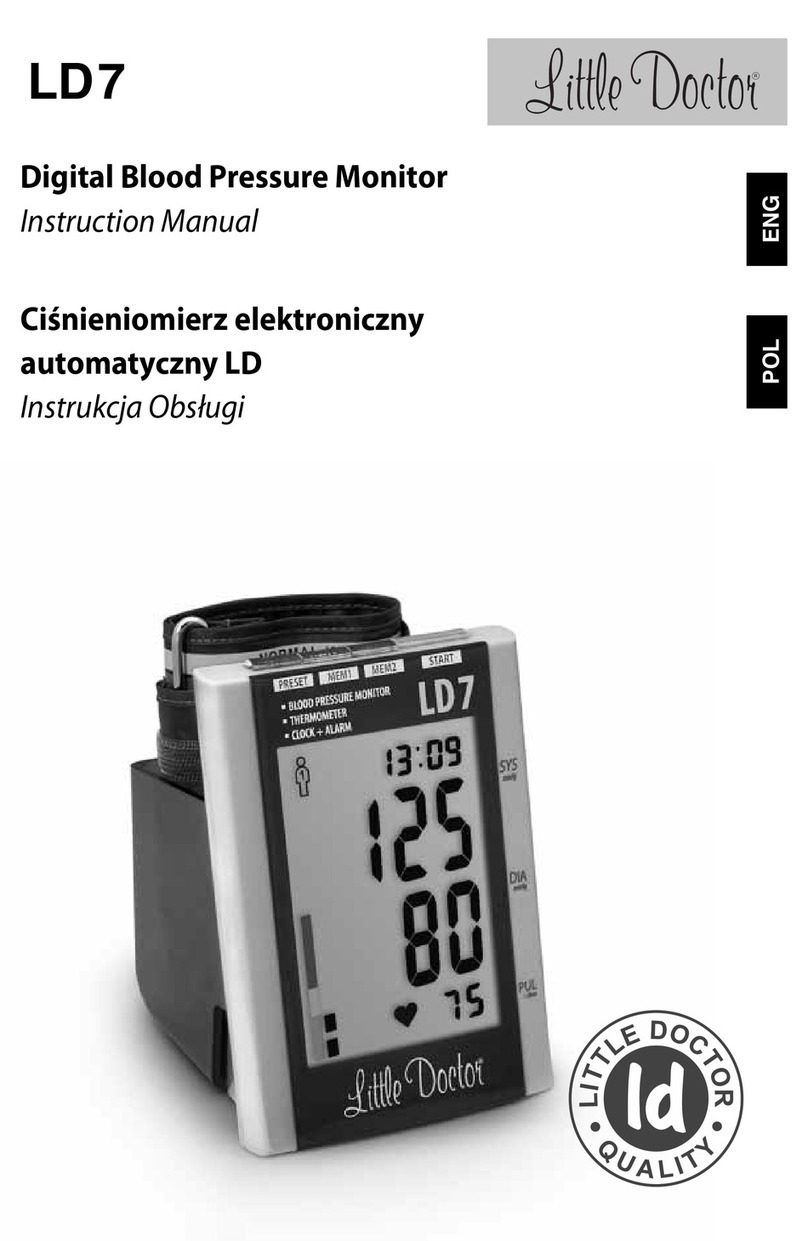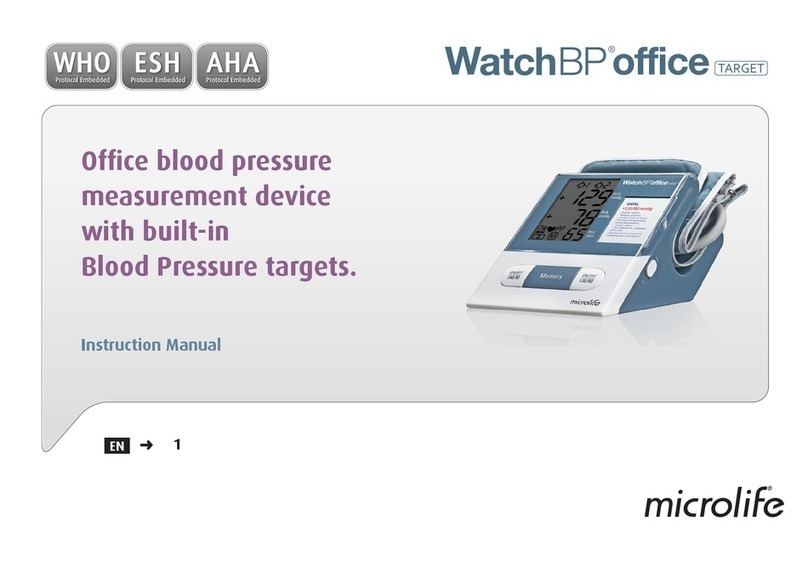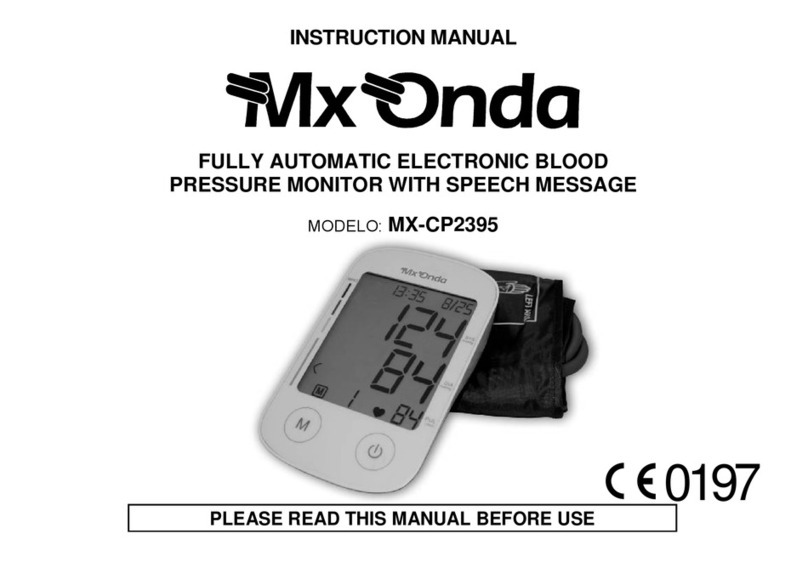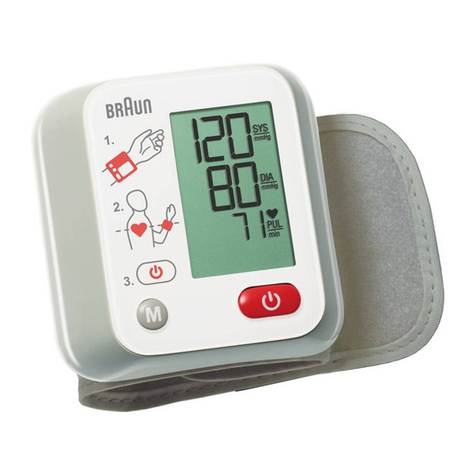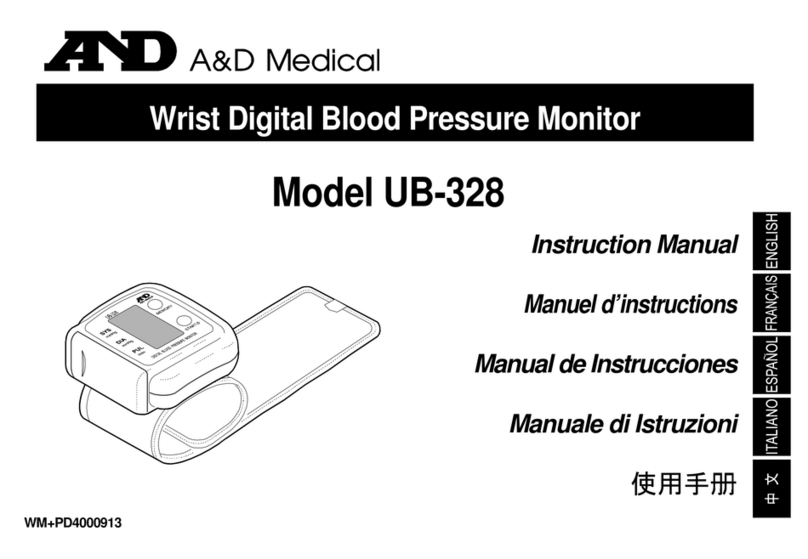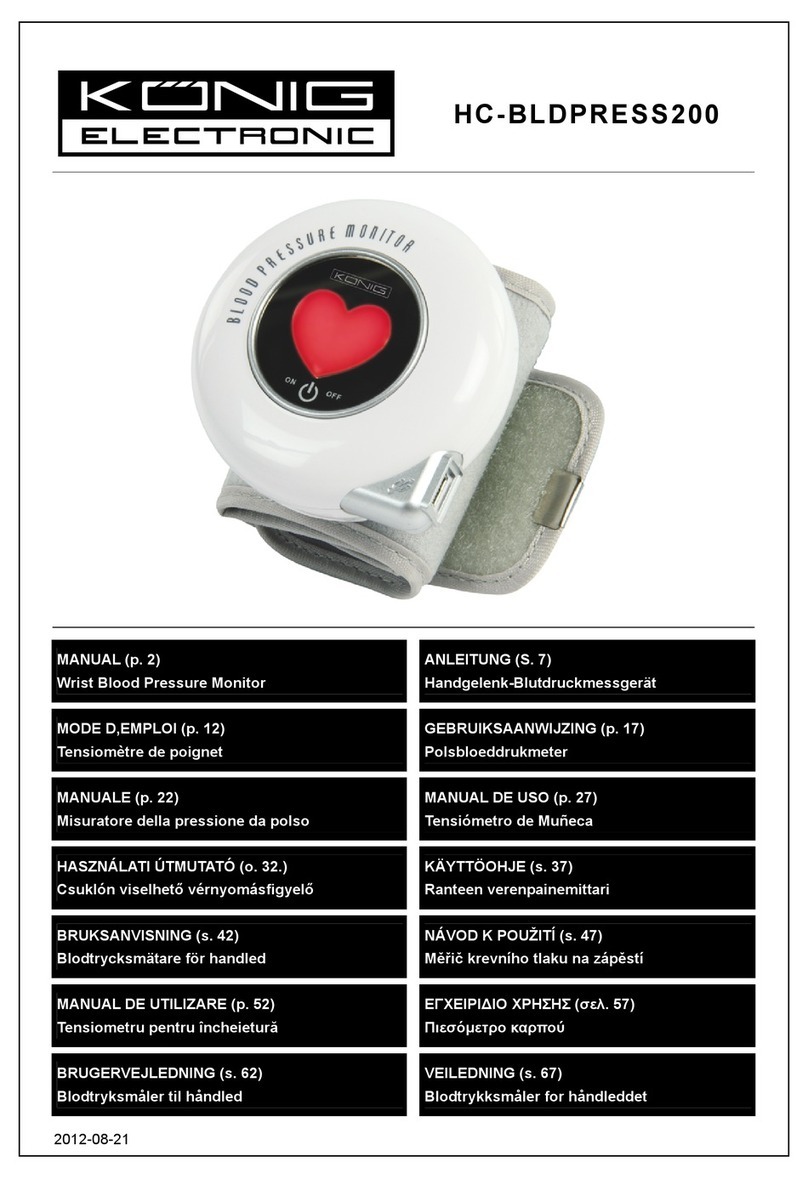
EN2
Battery Handling and Usage
• Keep batteries out of the reach of infants, toddlers and children.
2.2 Caution
Indicates a potentially hazardous situation
which, if not avoided, may result in minor or
moderate injury to the user or patient, or cause
damage to the equipment or other property.
• Stop using this monitor and consult with your physician if you
experience skin irritation or discomfort.
• Consult with your physician before using this monitor on an arm
where intravascular access or therapy, or an arteriovenous (A-V)
shunt, is present because of temporary interference to blood flow
and could result in injury.
• Consult with your physician before using this monitor if you have
had a mastectomy.
• Consult with your physician before using this monitor if you have
severe blood flow problems or blood disorders as cuff inflation can
cause bruising.
• DO NOT take measurements more often than necessary because
bruising, due to blood flow interference, may occur.
• ONLY inflate the arm cuff when it is applied on your upper arm.
• Remove the arm cuff if it does not start deflating during a
measurement.
• DO NOT use this monitor for any purpose other than measuring
blood pressure.
• During measurement, make sure that no mobile device or any other
electrical device that emit electromagnetic fields is within 30 cm of
this monitor. This may result in incorrect operation of the monitor
and/or cause an inaccurate reading.
• DO NOT disassemble or attempt to repair this monitor or other
components. This may cause an inaccurate reading.
• DO NOT use in a location where there is moisture or a risk of water
splashing this monitor. This may damage this monitor.
• DO NOT use this monitor in a moving vehicle such as in a car or on an
aircraft.
• DO NOT drop or subject this monitor to strong shocks or vibrations.
• DO NOT use this monitor in places with high or low humidity or high
or low temperatures. Refer to section 6.
• During measurement, observe the arm to ensure that the monitor is
not causing prolonged impairment to blood circulation.
• DO NOT use this monitor in high-use environments such as medical
clinics or physician offices.
• DO NOT use this monitor with other medical electrical (ME)
equipment simultaneously. This may result in incorrect operation
and/or cause an inaccurate reading.
• Avoid bathing, drinking alcohol or caffeine, smoking, exercising and
eating for at least 30 minutes before taking a measurement.
• Rest for at least 5 minutes before taking a measurement.
• Remove tight-fitting or thick clothing from your arm while taking a
measurement.
• Remain still and DO NOT talk while taking a measurement.
• ONLY use the arm cuff on persons whose arm circumference is
within the specified range of the cuff.
• Ensure that this monitor has acclimated to room temperature before
taking a measurement. Taking a measurement after an extreme
temperature change could lead to an inaccurate reading. OMRON
recommends waiting for approximately 2 hours for the monitor to
warm up or cool down when the monitor is used in an environment
within the temperature specified as operating conditions after
it is stored either at the maximum or at the minimum storage
temperature. For additional information on operating and storage/
transport temperature, refer to section 6.
• DO NOT use this monitor after the durable period has ended. Refer
to section 6.
• DO NOT crease the arm cuff or the air tube excessively.
• DO NOT fold or kink the air tube while taking a measurement. This
may cause an injury by interrupting blood flow.
• To unplug the air plug, pull on the plastic air plug at the base of the
tube, not the tube itself.
• ONLY use the AC adapter, arm cuff, batteries and accessories
specified for this monitor. Use of unsupported AC adapters, arm cuffs
and batteries may damage and/or may be hazardous to this monitor.
• ONLY use the approved arm cuff for this monitor. Use of other arm
cuffs may result in incorrect readings.
• Inflating to a higher pressure than necessary may result in bruising
of the arm where the cuff is applied. NOTE: refer to “If your systolic
pressure is more than 210 mmHg” in section 6 of instruction manual
for additional information.
• Read and follow the“Correct Disposal of This Product”in section 7 when
disposing of the device and any used accessories or optional parts.

